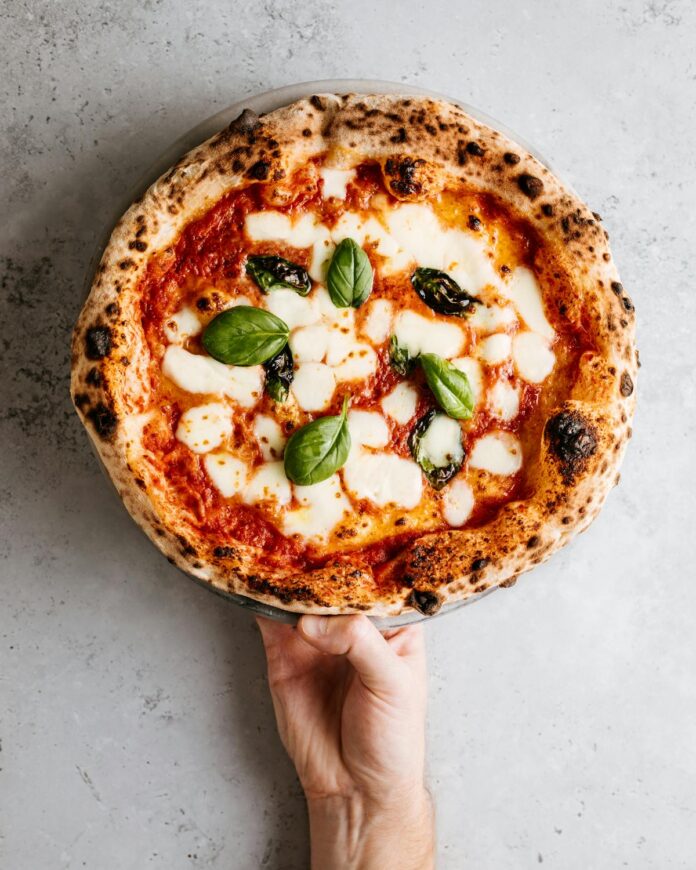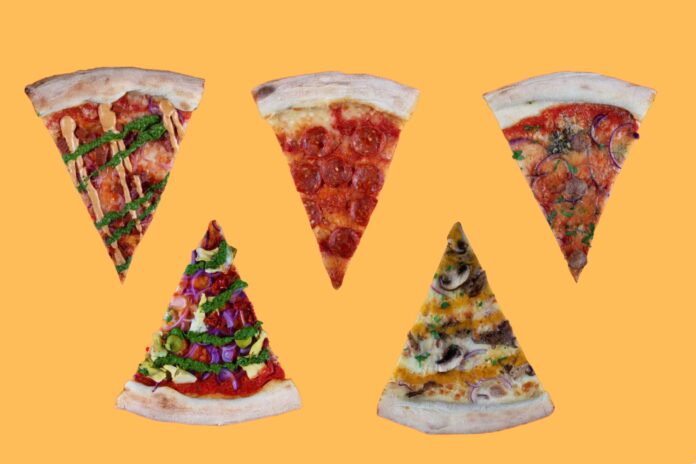In 2025, coffee tables continue to evolve beyond their practical origins to become thoughtfully considered elements in our living spaces. As our homes increasingly reflect broader lifestyle values, these once-humble pieces now balance aesthetics, functionality and even, at times, cultural awareness.
The latest trends show how our furniture choices are influenced by changing attitudes toward sustainability, craftsmanship and our relationship with technology. From natural materials to clever designs, today’s coffee tables offer insights into how our domestic priorities are shifting in subtle but meaningful ways.
With all that in mind, here are some of 2025’s key coffee table trends. Care to brew up an espresso before we begin? No? Shame…
Live-Edge Wood: Natural Authenticity
The popularity of live-edge and natural wood has remained strong into 2025, reflecting a continued appreciation for organic elements in our homes. These pieces—tree cross-sections on metal frames or driftwood-inspired bases—add warmth and character to living spaces while connecting interiors with the natural world.
This trend aligns with a broader interest in materials that showcase their origins and natural beauty. The unique grain patterns and organic edges make each piece one-of-a-kind, appealing to those looking to move away from mass-produced furniture. These tables pair particularly well with contemporary sofas in neutral tones, creating a pleasing contrast between clean lines and natural forms.
What makes these pieces relevant today is their authenticity—the cracks, knots, and irregular edges that might once have been considered imperfections are now valued for their character and uniqueness.
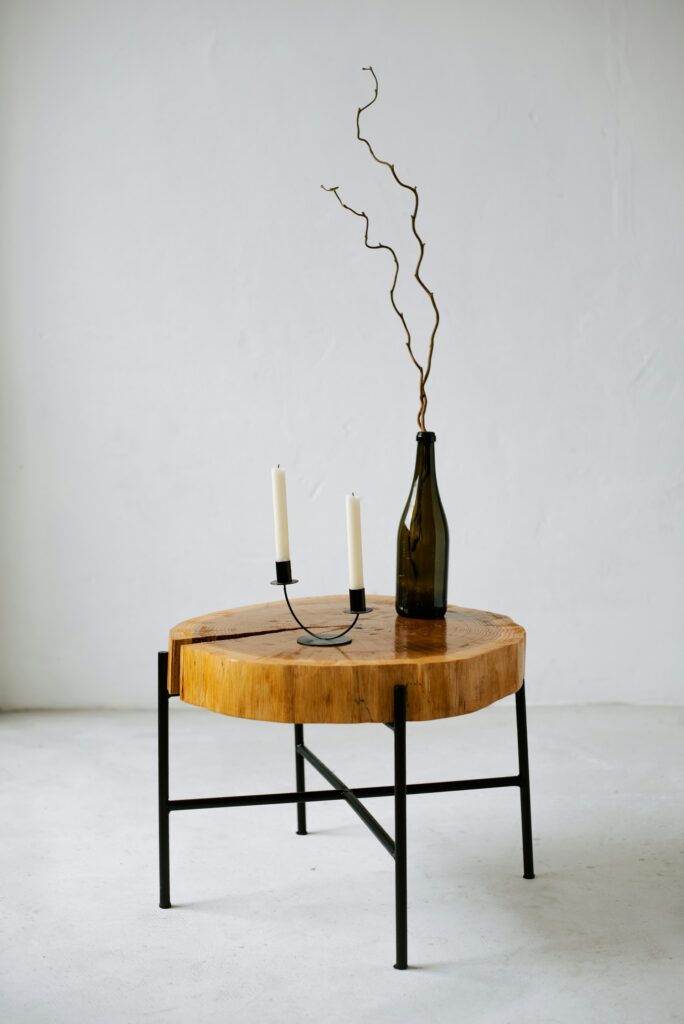
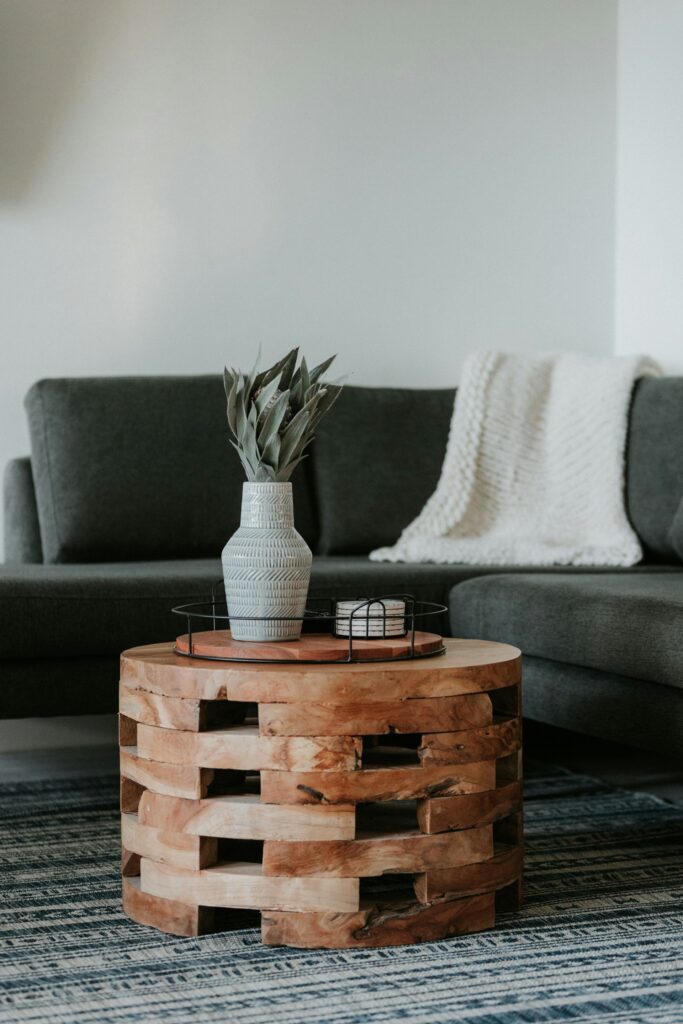
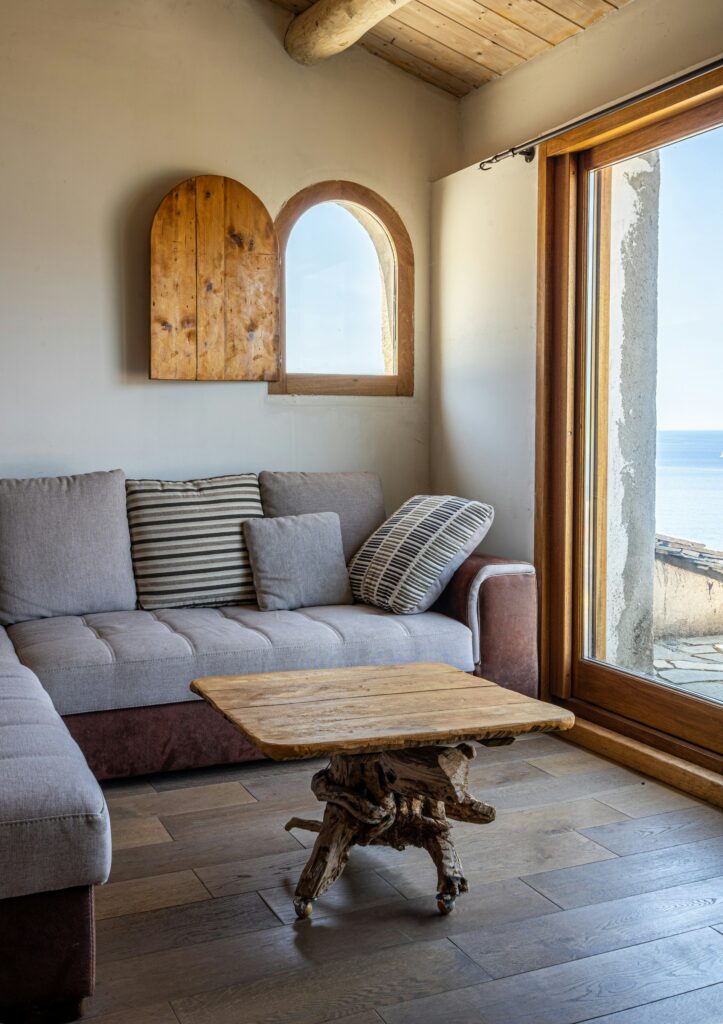
Architectural Stacking & Modular Sophistication
The architectural stacking trend showcases the growing appreciation for visible craftsmanship and thoughtful design. These tables, featuring precisely cut wooden blocks arranged in staggered formations, highlight the skills involved in their creation.
This style reflects a shift toward furniture that demonstrates quality construction and design intention. The negative spaces between wooden blocks create interesting visual effects and a sense of lightness despite the solid materials used.
These pieces appeal to those who appreciate the technical aspects of furniture making and want their homes to showcase well-crafted items that will last. The transparency of how these tables are constructed offers a refreshing clarity in their design approach.
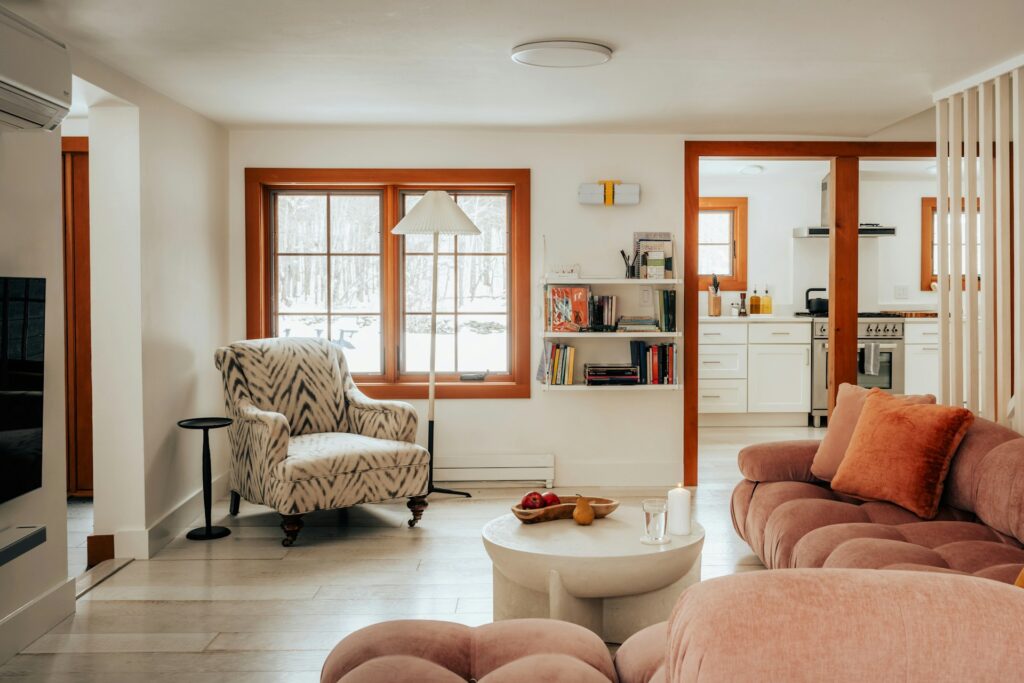
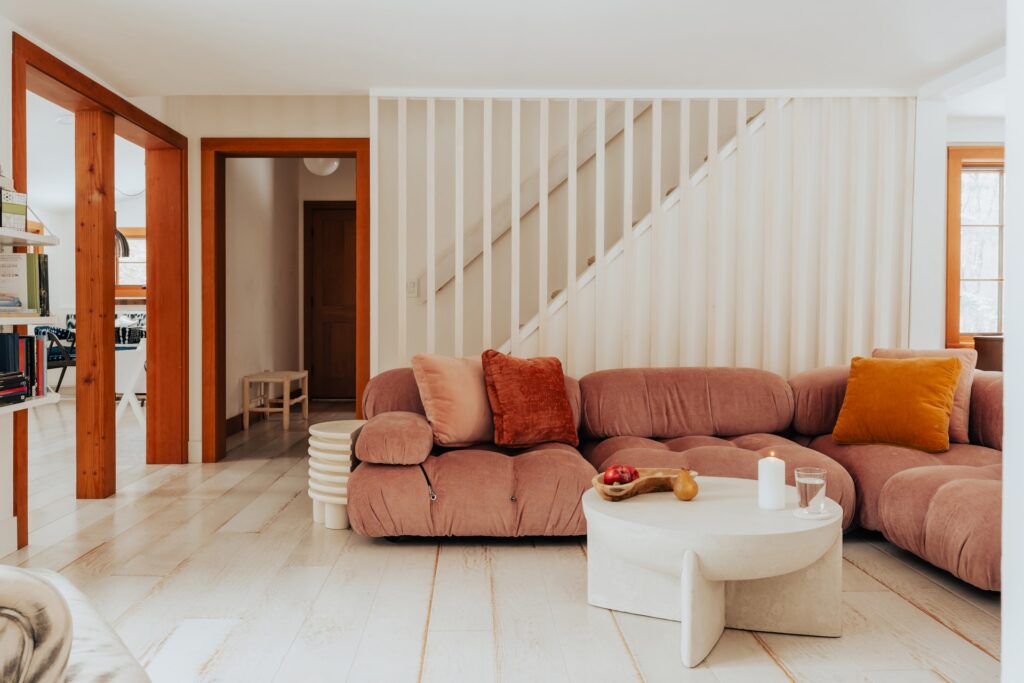
Mixed Materials
The combination of contrasting materials—glass with wood, rattan with marble, metal with stone—continues to be a popular approach in coffee table design. These pairings create visual interest by bringing together different textures and qualities in a single piece.
This trend allows for versatile designs that can complement various interior styles. The transparency of glass tops lightens the visual impact of substantial bases, while natural materials add warmth to more sleek components.
What makes this approach particularly appealing in 2025 is its adaptability. These tables can bridge different design elements within a room, helping to create cohesive spaces that incorporate both traditional and contemporary features.
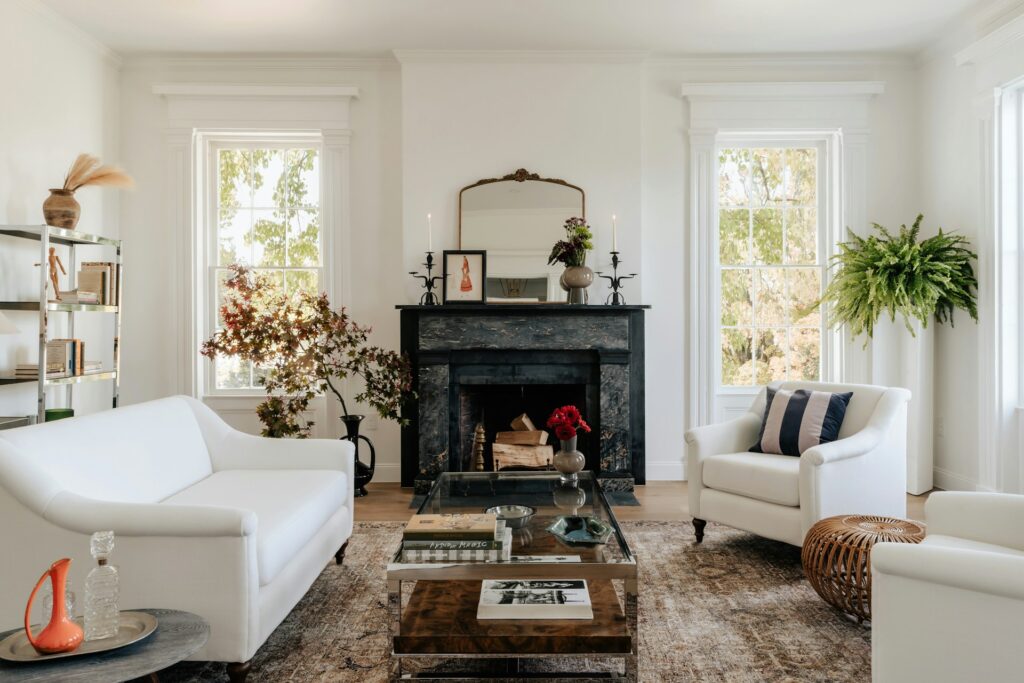

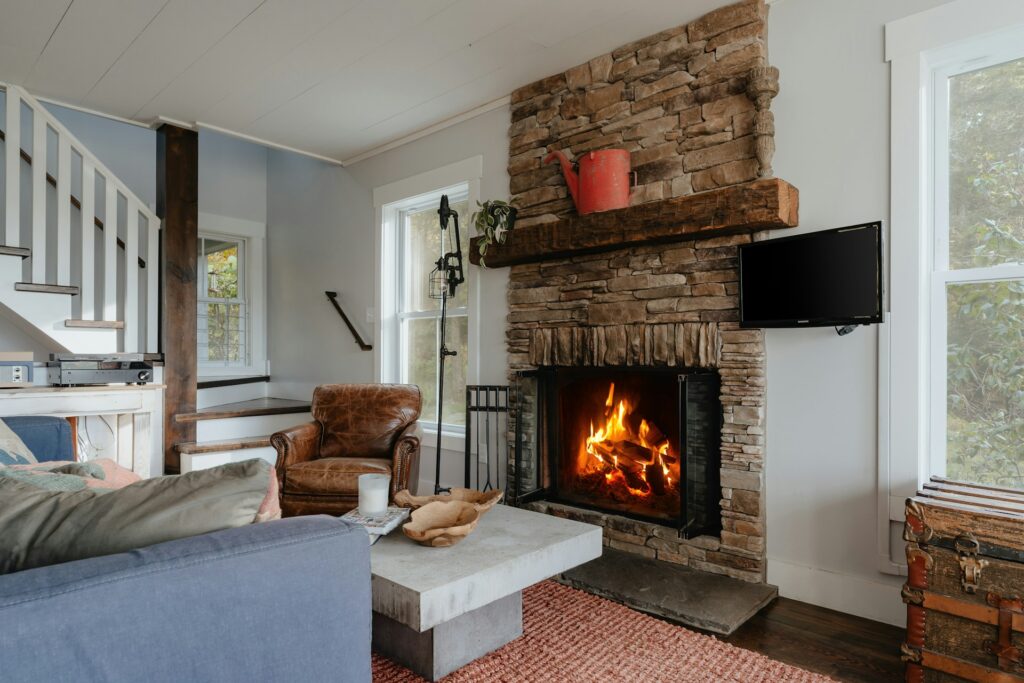
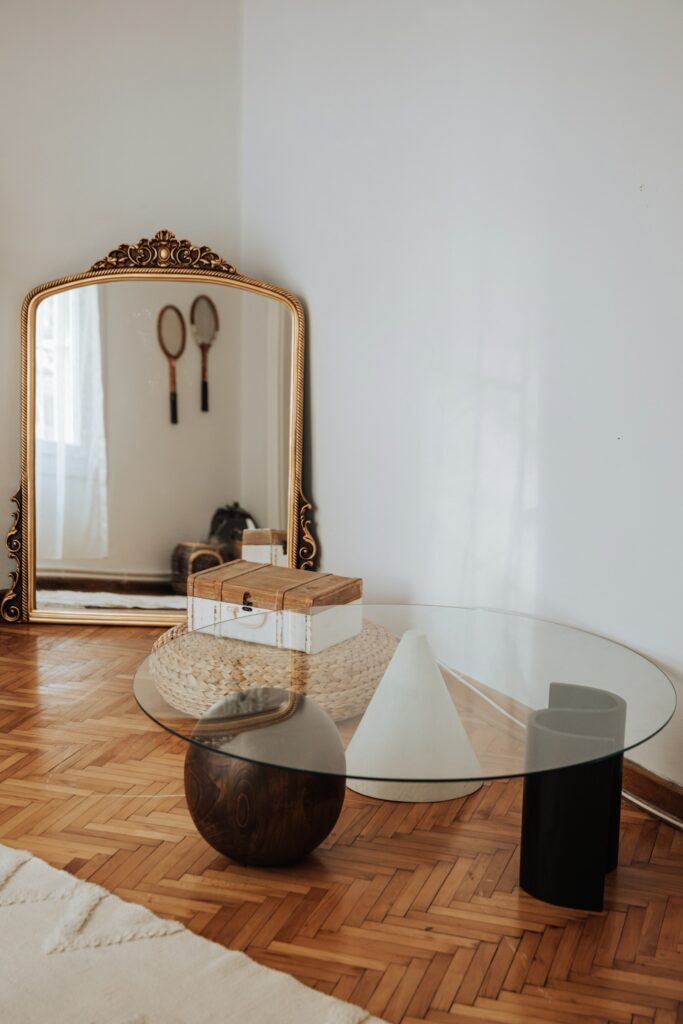
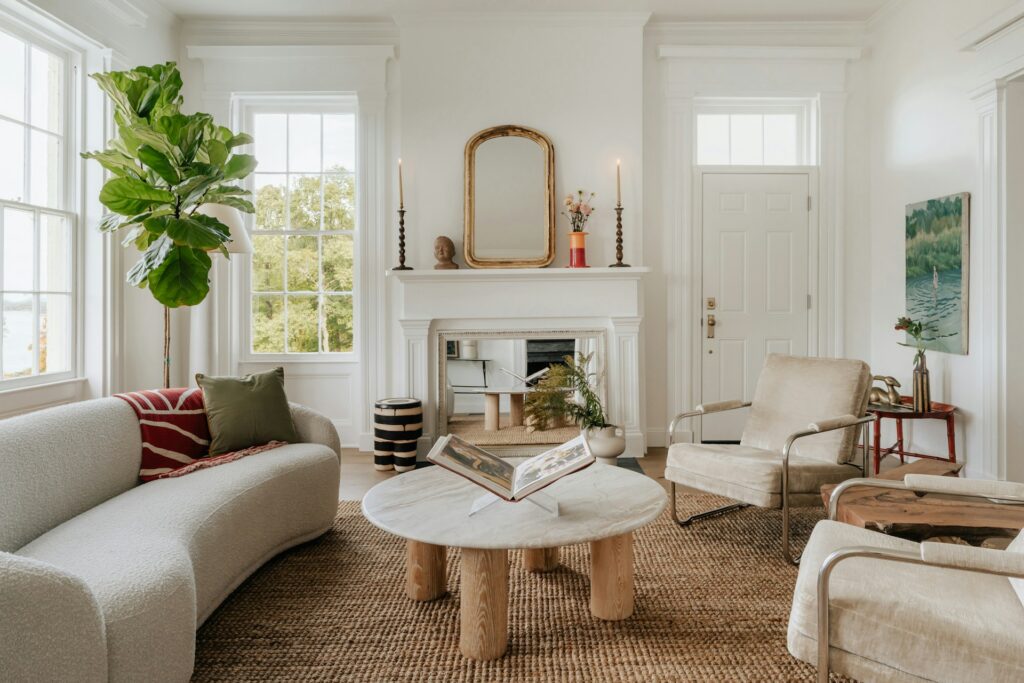
The Earthy Minimalism Of Stone & Marble
In response to the maximalist tendencies of previous years, 2025 has embraced the cool sophistication of stone and marble surfaces. Clean-lined concrete coffee tables bring industrial chic into residential spaces. The material’s natural variations and patina develop over time, creating a piece that evolves with its environment.
These stone-inspired surfaces offer durability and a sense of permanence while their neutral tones provide a versatile foundation for changing décor elements throughout the seasons. Marble tops on wooden legs offer the perfect blend of luxury and warmth, creating a focal point that complements both traditional and modern interiors.
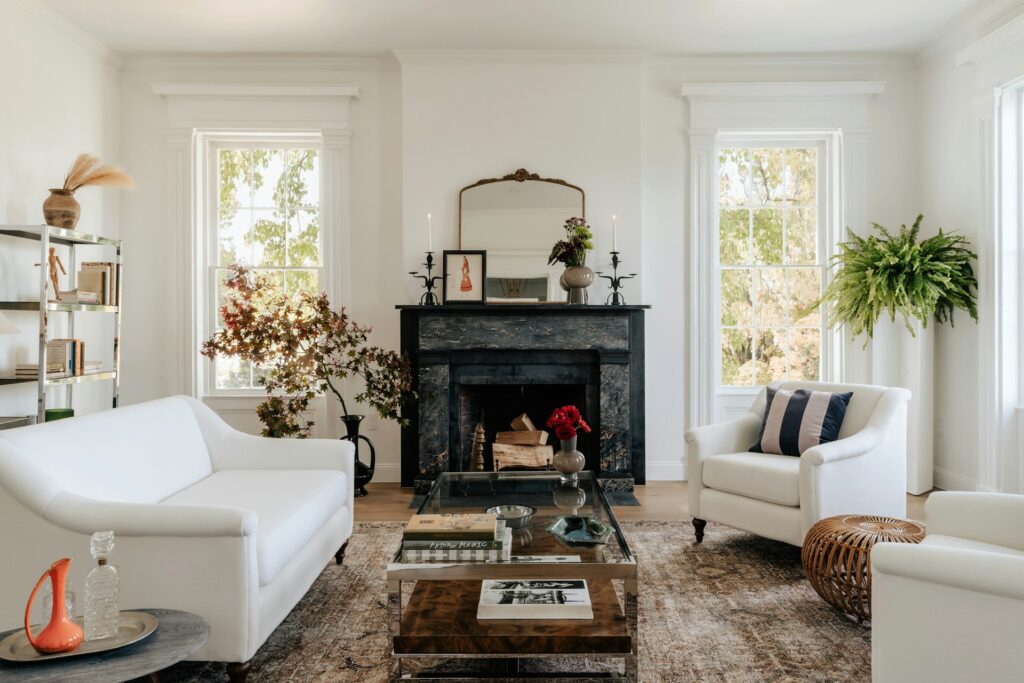
Statement Fireside Tables
The relationship between coffee tables and fireplaces has taken on new significance, highlighting how tables now work in concert with architectural elements. The careful positioning of coffee tables relative to seating arrangements and fireplaces demonstrates how today’s homeowners prioritise both aesthetics and practical gathering spaces.
Tables are sized proportionally to surrounding furniture, creating balanced compositions that facilitate conversation and comfort. In homes with fireplaces, low-profile concrete or wood tables create a harmonious flow while maintaining the hearth as the room’s anchor.
Read: What your choice of coffee says about you
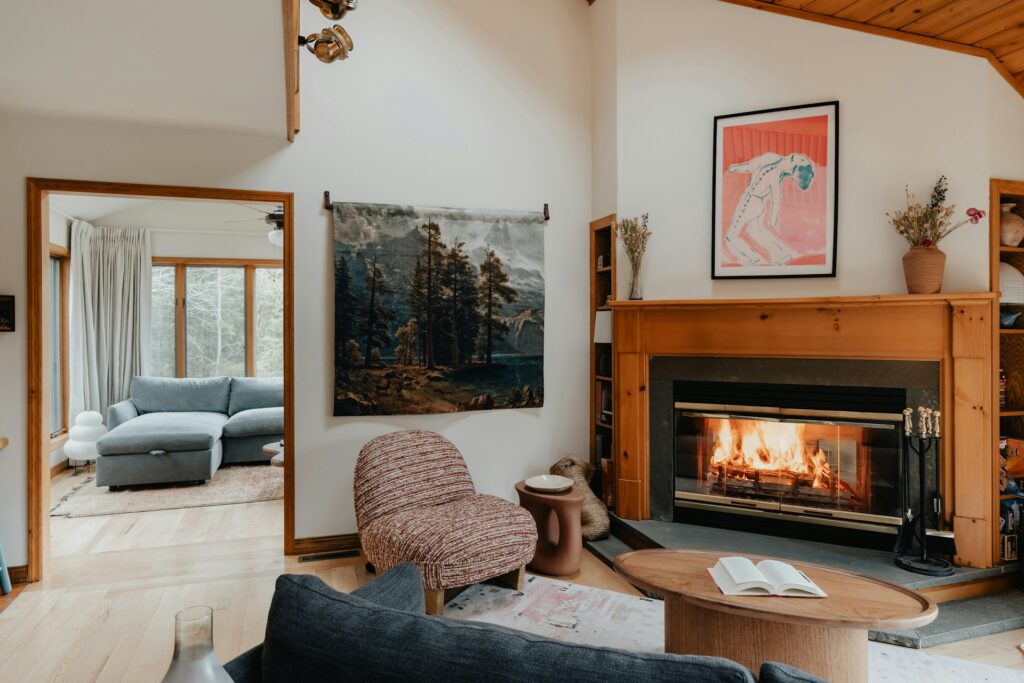
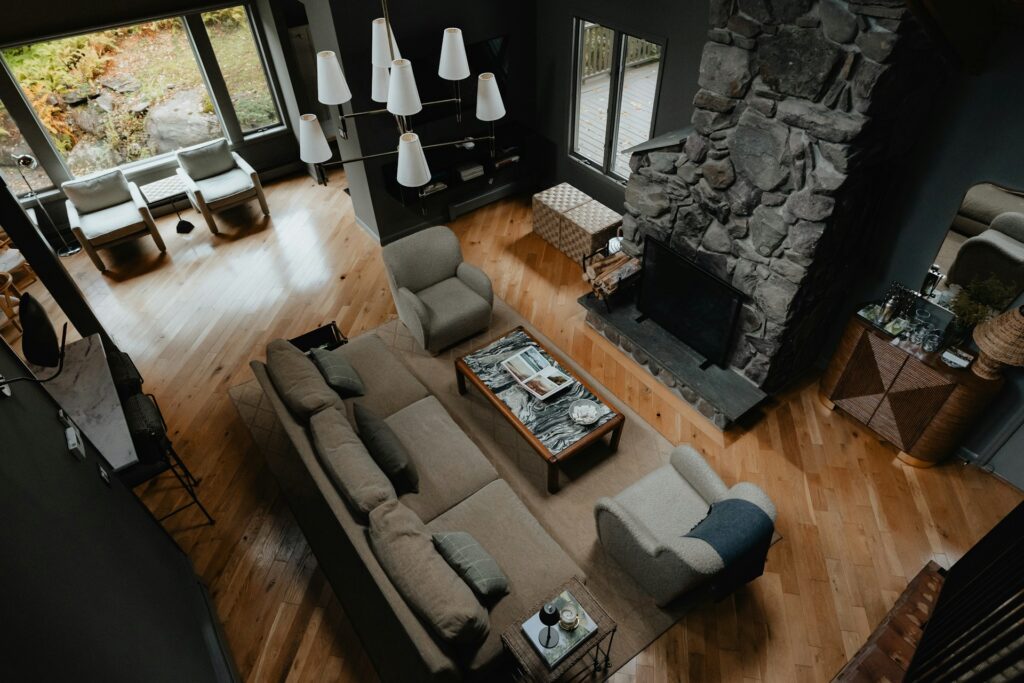
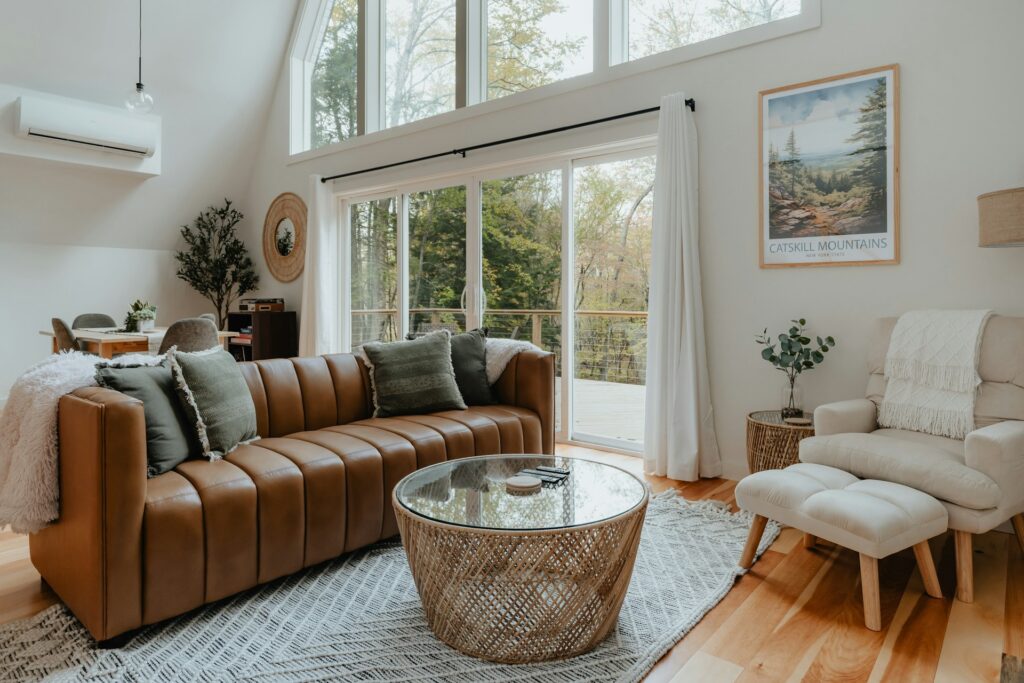
Softening Our Spaces
As we seek more comfort and flow in our homes, angular corners are giving way to gentle curves. Rounded coffee tables exemplify this shift toward softer silhouettes.
Marble-topped round tables provide elegant focal points without the hazard of sharp corners, making them ideal for homes with children or spaces with high traffic flow. Similarly, organically shaped glass tables seem to float above herringbone floors, adding visual interest without visual heaviness.
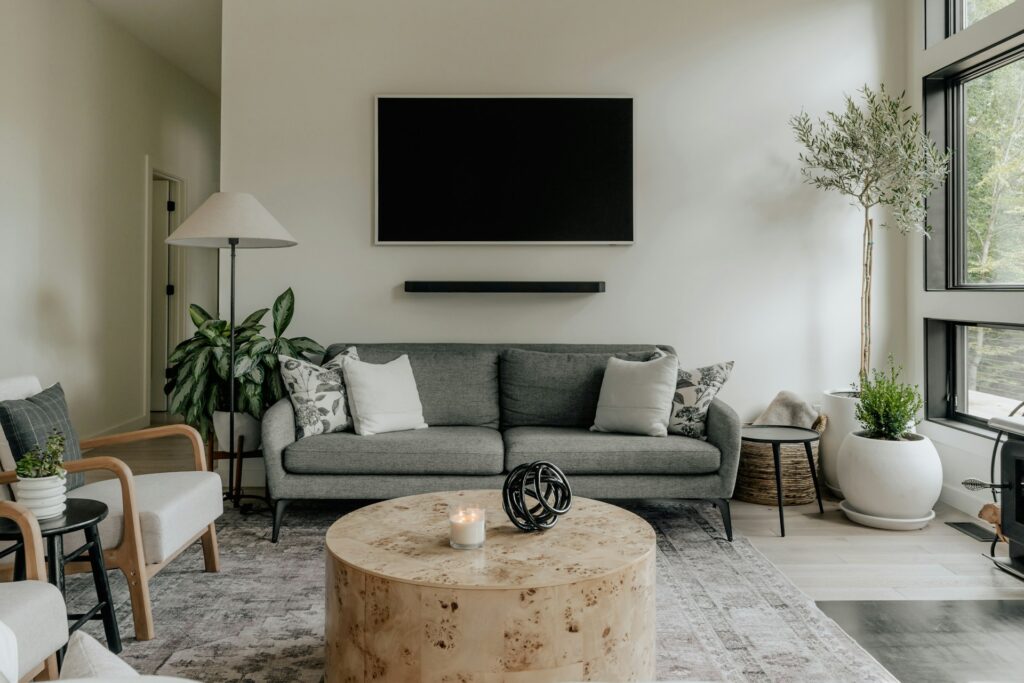
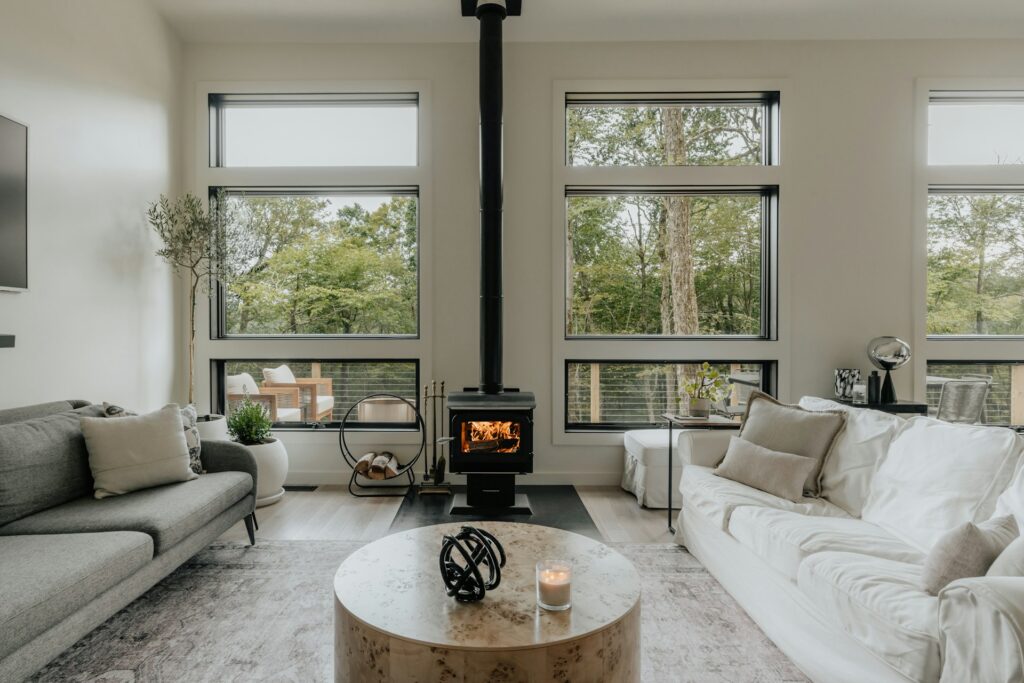
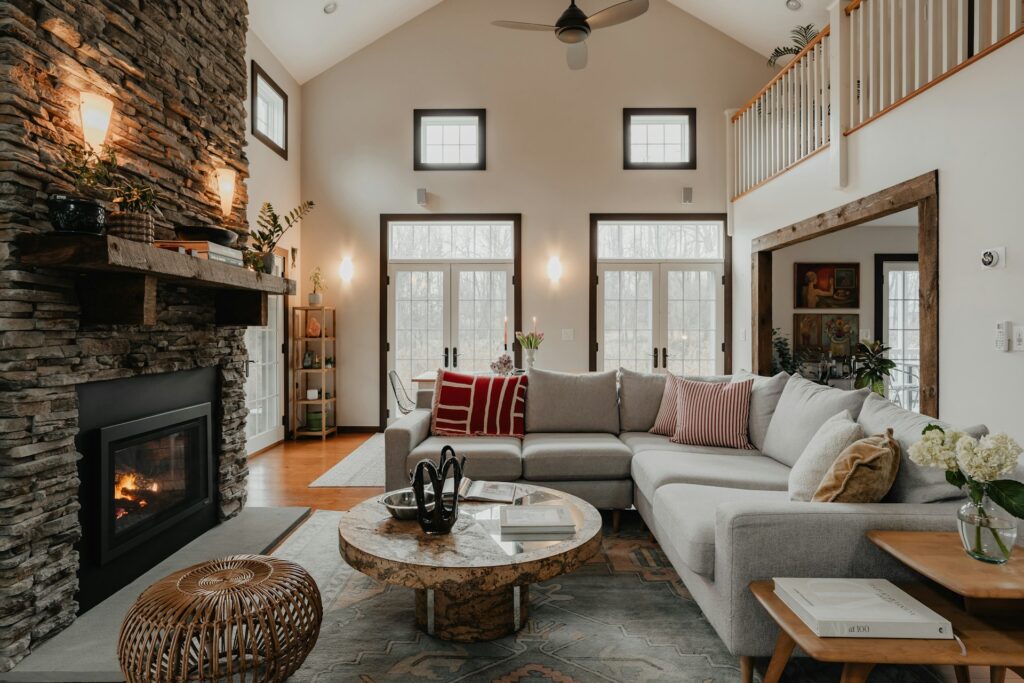
Natural Materials & Sustainability
The focus on sustainable materials continues to influence coffee table design in 2025. Reclaimed wood, locally sourced stone, and renewable materials feature prominently as consumers become more environmentally conscious in their purchasing decisions.
These material choices reflect growing awareness of furniture’s environmental impact. The careful integration of these sustainable elements into stylish designs demonstrates that eco-friendly options no longer require compromising on aesthetics.
The pairing of these materials with complementary colour schemes—wood tones against green walls or natural textures with neutral backgrounds—creates harmonious spaces that feel thoughtfully curated rather than randomly assembled.
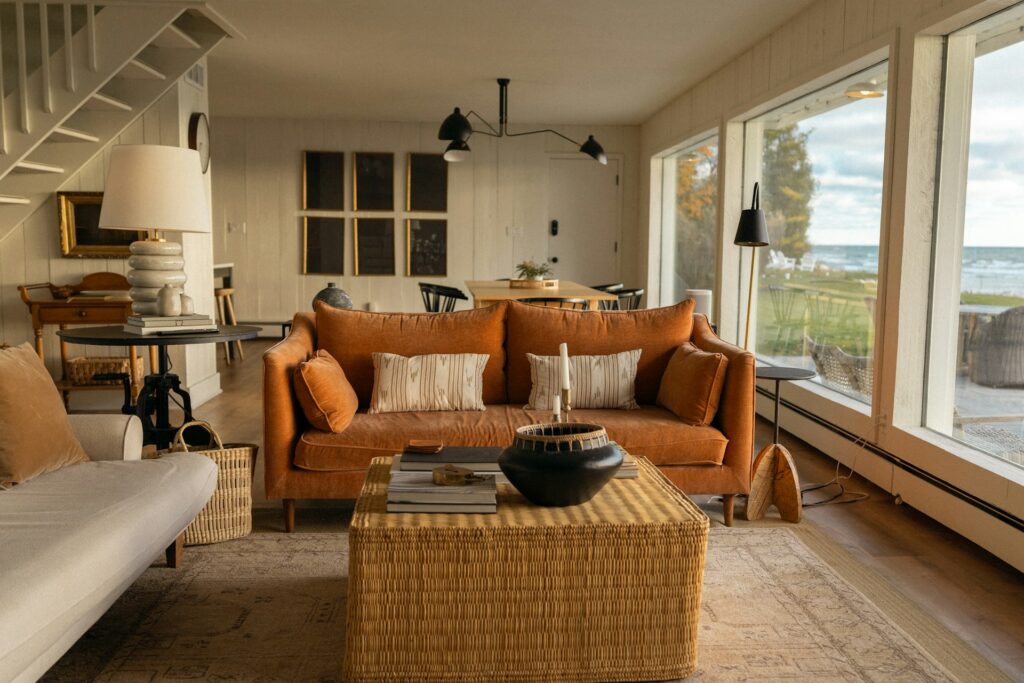
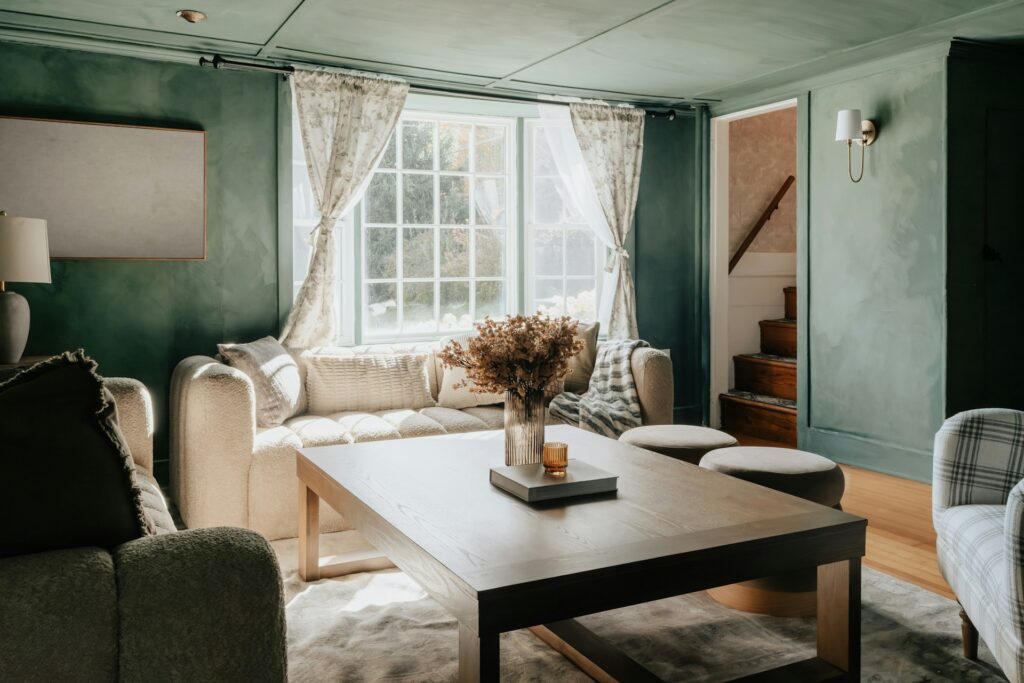
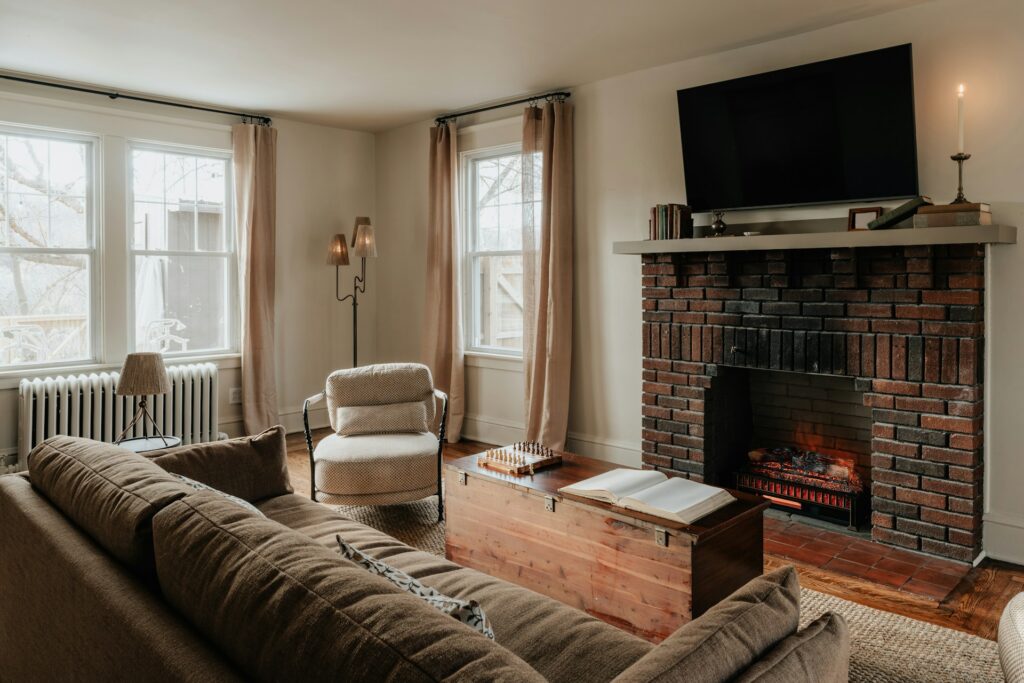
Smart Functionality: Subtle Technology Integration
A newer trend emerging in 2025 is the thoughtful integration of technology into coffee tables. These designs include features like wireless charging surfaces, subtle lighting elements, or temperature control, all incorporated without compromising the table’s appearance.
Unlike earlier attempts at tech furniture, today’s versions prioritize elegant design first, with functionality discreetly embedded. Matte surfaces with hidden charging capabilities or wood tops with integrated ambient lighting offer convenience without drawing attention to the technology.
What distinguishes this trend is its restraint—technology serves as an enhancement rather than the defining feature. These tables acknowledge our need for connectivity while maintaining the comfort and aesthetic appeal of our living spaces.
The Bottom Line
The diversity of coffee table styles available in 2025 reflects how our living spaces continue to transform to meet changing needs and preferences. While these pieces may seem like simple furniture choices, they do indicate broader shifts in how we approach our homes—with greater attention to quality, sustainability, and thoughtful design.
The increased investment in well-made coffee tables suggests a move toward more considered purchasing decisions, where longevity and quality take precedence over temporary solutions. As our homes continue to serve multiple functions—from work spaces to entertainment areas—the furniture we choose needs to be both practical and pleasing.
Today’s coffee tables offer more than just a surface for drinks and magazines; they provide an opportunity to express personal style while creating functional, comfortable living spaces that reflect our values and priorities.


